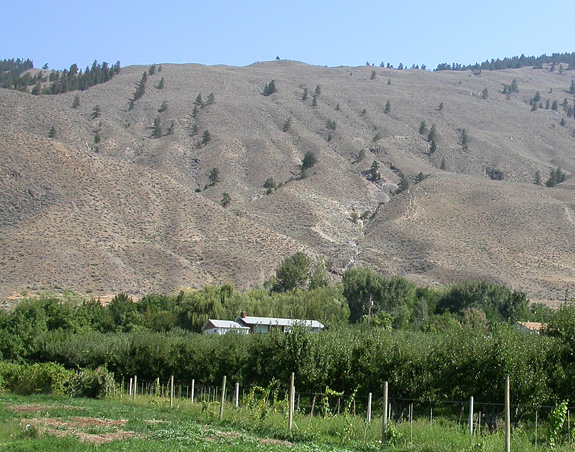
When I was a boy growing up near the town of Cawston in the desert interior of British Columbia, the family dining-room window looked across our orchard toward the nearby hills that cradled the Similkameen Valley. These were grey sagebrush-covered mounds with gently rounded profiles like those of the mountains on the Moon.
One particular hill was the highest of all. And atop this hill was a single ponderosa pine. Every night at dinner I looked out that window and dreamed of climbing to that solitary tree. I wondered long and hard about what might lie on the other side of that hill.
During this time I saved enough birthday and Christmas money to purchase my first telescope, a 3-inch Tasco Newtonian reflector. This was a modest instrument, to be sure, but when I first saw the Moon through it, I literally gasped. Nothing I had read nor any of the pictures in my astronomy books had fully prepared me for the experience of actually seeing the Moon’s cratered surface for the first time. It was familiar yet utterly unreal.
Eventually the Moon and I became close friends, though it has to be admitted that this friendship was probably very one sided. In time I came to know its surface as well as I did my own backyard, and I began to wonder what secrets lay just out of view on the lunar far side. This was another hill I longed to climb. Some echo of that childhood longing returns when I see the image presented above.
Recorded by the Jupiter-bound Galileo spacecraft on December 7, 1992, this is not the first picture showing the Moon’s north-pole region. In 1967 Lunar Orbiter IV mapped this part of the lunar surface in considerable detail. Indeed, there is very little shown in this image that cannot be glimpsed in backyard telescopes when the Moon’s northern limb is favorably tilted toward us. And of the thousands of images Galileo ultimately beamed back to Earth, this pre- Jupiter glimpse of our neighbor represents an all-but-forgotten moment in the spacecraft’s 14-year mission.
No, what makes this Galileo image so compelling is that it lets us appreciate the Moon from a different perspective — familiar yet utterly unreal at the same time. Indeed, the better you know the Moon, the more jarring this picture feels. Casual lunar observers will easily recognize features such as the dark-floored crater Plato, the ill-defined sprawl of Mare Frigoris, and a strangely elongated Mare Crisium. But there is also the extreme north that we never see without harsh foreshortening, if at all — the terra incognita that I longed to explore with my first telescope.
One summer day, my brother and I finally did climb those hills to the sentinel pine. Breathless, excited, and full of anticipation, we scrambled to the top and looked upon a vista forever hidden from our dining-room window and saw . . . more hills, more sagebrush, and more trees. Disappointed, we stood there for a short time before quietly turning home. But really, what were we expecting to find? Craters?

Did you find this article interesting or helpful? If so, consider using this link the next time you shop at Amazon.com. Better yet, bookmark it for future use. Thanks to Amazon’s associates program, doing so costs you nothing yet helps keep this site up and running. Thanks!
Note: This is a modified version of an essay I wrote for the May 2006 issue of Sky & Telescope magazine.
